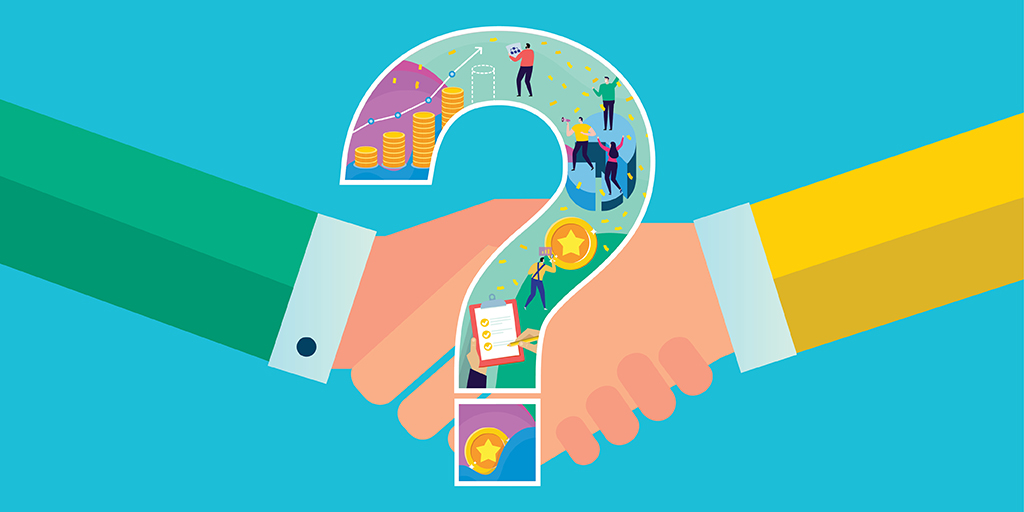02 Feb B2B loyalty programs: 5 things to consider

Acquiring new customers within the B2B world is much more complex and time consuming than B2C. So it’s no surprise that B2B marketers are investing a great deal of time and effort sourcing new ways to retain their customers and drive long term loyalty. We shared a few strategies on this topic in our recent article ‘5 ways to drive B2B loyalty’.
One strategy which we did not cover was B2B loyalty programs. Loyalty programs have been around for hundreds of years, with the first retail loyalty program believed to be the S&H Green Stamp program, which launched in 1896. Since then, brands around the world have been attempting an array of initiatives and strategies to win the hearts, minds and wallets of their customers. It appears, however, that B2B is lagging somewhat. A recent PwC survey, revealed that almost 60% of B2B customers reported they had never had an experience with a brand that made them feel special.
There are many successful B2C loyalty programs active today, but you will find a lot less B2B loyalty programs. This is changing, however, with B2B marketers recognising the benefits a program could have on building customer stickiness.
What is a B2B loyalty program?
We once wrote that “a loyalty program should be described as a structured customer strategy to help build stronger relationships. Providing a value exchange between the brand and customer, beyond the product and services paid for.”
This absolutely applies to B2B loyalty programs too. The incentives may differ, but the purpose remains the same.
B2B loyalty programs – things to consider
1. Member nuances
At the end of the day, we’re all consumers. There’s certainly plenty to learn from our own personal experiences with loyalty programs and many B2C techniques that are transferable to B2B. However, in saying that – there are a number of nuances to consider. Keep in mind that B2B buyers make rational purchasing decisions, whereas B2C customers tend to make more emotionally based decisions. There are complexities around regulatory requirements which must be adhered to, and what works for one brand or sector doesn’t mean you can replicate for another. There are extremely high levels of personalisation involved within B2B that are time consuming but should be maximised.
2. Decision making unit
We’ve covered this in one of our previous articles. There are multiple layers of stakeholders within the B2B space. Take some time to understand the roles and responsibilities of each stakeholder. If you’re considering implementing a loyalty program then you need to be clear who is eligible for which rewards/incentives and what the process entails. Although there may be only one decision maker who signs the dotted line, don’t forget those who influence that decision!
3. Research
B2B buyers are highly under-analysed. We recommend conducting extensive market and customer research before doing anything else. You’d be surprised how many brands skip this completely, thinking they know what their customers value – then are surprised when their program fails. Don’t make that mistake – although it’s a huge investment upfront, trust us, it will be worth it in the long run.
4. Types of rewards
Firstly determine the goals and objectives of the program. What are the expectations? Loyalty programs help to influence future customer behaviours. Consider which behaviours can help to drive profit before contemplating which rewards your loyalty program will offer. Tiered incentives work well within B2B and keep customers engaged, as does forming strategic partnerships/alliances that offer mutual benefits and opportunities. Referral programs are extremely popular – and for good reason, 84% of B2B decision makers start the buying process with a referral (source: HBR), offering exclusive discounts, anniversary incentives, credit and gifts/gift cards.
5. Success measurement
When done well – loyalty programs pay for themselves. If your loyalty program is costing you then it’s time to revisit. Keep track of your customer lifetime value, repeat customer rate, average spend and the number of referrals you’re receiving. Analyse and benchmark this data frequently. The strength of the relationship is imperative and must be regularly assessed to ensure the customer is happy, helping to reduce the risk of them going to a competitor.
Loyalty programs are fantastic initiatives – but as mentioned, only when done well. If you’re considering a B2B loyalty program for your brand, please invest in the program upfront by understanding more about your buyers and what incentives could help create stickiness and strategic loyal partnerships. A couple of great B2B programs to check out include Lenovo’s LEAP Program and Countrywide’s InSeason Rewards Program.
If you already have a B2B loyalty program, then conduct a mini self-assessment, determine the following:
- Can you easily measure how your customers feel about the program?
- Can you determine how much incremental value your program is creating?
- If you removed your program, would it have an impact on retention?
- Is the program rewarding the right behaviours to help you drive profit?
- Are you receiving as much interest as you had projected?
- Do you know how many referrals to the program you are receiving from existing members?
- Can you easily measure the impact your loyalty program has had on increasing customer frequency and customer lifetime value?
- Is the program delivering against its objectives?
- Is the program easily managed and maintained?
Customology are customer growth and retention specialists. We have extensive experience supporting B2B brands, helping them build long term loyalty with their customers. If you’re thinking of implementing a B2B loyalty program or aren’t happy with the deliverables of your existing program, we’d love to help. Contact one of our Customologists on 1300 264 549 or hi@customology.com.au for a confidential chat.
|
Listen to...
|


